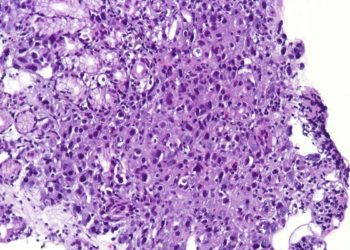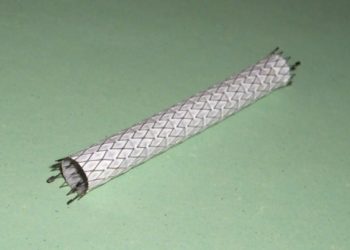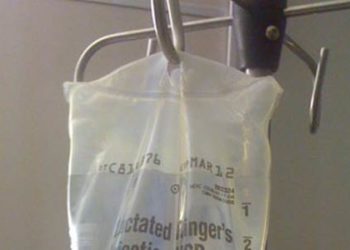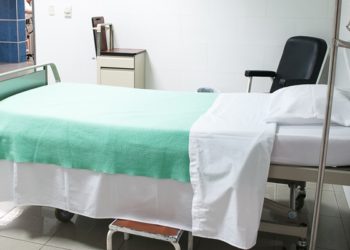Community hospitals rely on greater CT use to diagnose pediatric appendicitis
Jan 6th – CT scans rather than ultrasounds are more likely to be performed on children with suspected appendicitis at a community hospital than a tertiary care children’s hospital.[tabs tab1=”2MM Rundown” tab2=”Full 2MM Report” tab3=”About the Authors”]
[tab]
Image: CC/James Heilman
1. CT scans rather than ultrasounds are more likely to be performed on children with suspected appendicitis at a community hospital than a tertiary care children’s hospital.
2. Pre-operative imaging did not eliminate unnecessary appendectomies.
Preoperative evaluation with CT imaging as opposed to US to evaluate appendicitis is significantly more likely at a community hospital. Importantly, this study also indicates that use of pre-operative imaging did not eliminate unnecessary appendectomies. These results suggest that there may be an over-reliance on CT for the diagnosis of pediatric appendicitis, and that the pre-test probability of the test may be improved by a more systematic pre-imaging diagnostic approach, particularly in community hospitals. Reducing CT use would also decrease overall healthcare costs as well as children’s exposure to potentially harmful radiation.
Click to read the study in Pediatrics
[/tab]
[tab]
Image: CC/ James Heilman
1. CT scans rather than ultrasounds are more likely to be performed on children with suspected appendicitis at a community hospital than a tertiary care children’s hospital.
2. Pre-operative imaging did not eliminate unnecessary appendectomies.
Primer: Appendicitis is caused by inflammation of the appendix, most often in the setting of nonspecific obstruction of its lumen. It is a common cause of acute abdominal pain in children and requires emergent surgery to avoid complications such as perforation. Classic symptoms of appendicitis include colicky pain that is initially localized to the periumbilical region and then migrates to the right lower quadrant, as well as fever, vomiting, and anorexia. These features of appendicitis are not sensitive or specific in the pediatric population, however, and the diagnosis requires high clinical suspicion and the aid of either computed tomography (CT) or ultrasound (US).
CT evaluation for appendicitis is highly sensitive and specific, but is costly and involves exposing the patient to radiation. As radiation exposure may increase the risk of solid organ cancer, it is important to minimize. The American College of Radiology recommends US as an alternative for children with suspected appendicitis since it has no radiation exposure; however, despite good specificity, the sensitivity of US depends heavily on operator skill, which limits the test’s utility. This study evaluates efficacy of preoperative imaging in patients undergoing an appendectomy at an urban tertiary care children’s hospital, especially in patients transferred from community.
Background reading:
1. Up To Date: Acute appendicitis in children
2. Atypical clinical features of pediatric appendicitis
This [retrospective cohort] study: evaluated the hospital course of 423 children aged 1 to 18 years who underwent appendectomies at a tertiary care children’s hospital during 2009-2010. The study evaluated the accuracy of preoperative diagnosis as aided by evidence of appendiceal inflammation on imaging. Secondary variables included site of initial evaluation (community or tertiary care) and patient characteristics including age and gender.
Preoperative imaging was performed in 395 cases. Cases in community hospitals had a ~4.4 fold higher odds of obtaining preoperative CT versus cases from tertiary care centers (p=0.002). In addition, community hospitals used ultrasound considerably less (odds ratio 0.2, p=0.003). There was no significant difference in number of unnecessary appendectomies between patients receiving pre-operative imaging and those without.
Additionally, the sensitivity of both CT and US was diminished in the community as compared to the tertiary care setting.
In sum: Preoperative evaluation with CT imaging as opposed to US to evaluate appendicitis is significantly more likely at a community hospital. Importantly, this study also indicates that use of pre-operative imaging did not eliminate unnecessary appendectomies. These results suggest that there may be an over-reliance on CT for the diagnosis of pediatric appendicitis, and that the pre-test probability of the test may be improved by a more systematic pre-imaging diagnostic approach, particularly in community hospitals. Reducing CT use would also decrease overall healthcare costs as well as children’s exposure to potentially harmful radiation.
Click to read the study in Pediatrics
By [EH] and [DB]
© 2013 2minutemedicine.com. All rights reserved. No works may be reproduced without written consent from 2minutemedicine.com. Disclaimer: We present factual information directly from peer reviewed medical journals. No post should be construed as medical advice and is not intended as such by the authors or by 2minutemedicine.com. PLEASE SEE A HEALTHCARE PROVIDER IN YOUR AREA IF YOU SEEK MEDICAL ADVICE OF ANY SORT. Content is produced in accordance with fair use copyrights solely and strictly for the purpose of teaching, news and criticism. No benefit, monetary or otherwise, is realized by any participants or the owner of this domain.
[/tab]
[tab]
 Emilia Hermann: Emilia is a 3rd year MD candidate at the University of Pennsylvania.
Emilia Hermann: Emilia is a 3rd year MD candidate at the University of Pennsylvania.
 Devika Bhushan: Devika is a 4th year M.D. candidate at Harvard Medical School.
Devika Bhushan: Devika is a 4th year M.D. candidate at Harvard Medical School.
[/tab]
[tab]
[/tabs]




